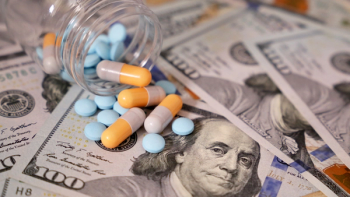
Drug Price Controls: “Red Meat for the Left” or Russian Roulette?
Kaiser’s August healthcare poll results should put all on high alert given public sentiment and the rhetoric of the political season. Ed Schoonveld sounds the alarm and offers four initiatives to stall the surge towards government intercession on escalating prices.
Kaiser’s August healthcare poll results should put all on high alert given public sentiment and the rhetoric of the political season. Ed Schoonveld sounds the alarm and offers four initiatives to stall the surge towards government intercession on escalating prices.
The news extensively covers criticism over prescription drug pricing. In fact, a recent
President Obama called to provide government with bargaining power to negotiate prices for Medicare.
Underestimating public dissatisfaction with the industry is starting to look like Russian roulette as Democratic and Republican contenders are eager to score points with a frustrated electorate.
U.S. and German politics are fundamentally different, but the drug industry was recently surprised by the introduction of price controls in Germany-a response to public outcry over unreasonable prices and industry arrogance toward the ruling political establishment. Of course that will never happen in the United States, or will it?
It is time for the drug industry to act as if it wants to avoid unwanted government intervention.
Kaiser Tracking Poll
The August 2015
According to the poll, the public perceives the drug industry as unreasonable in its focus on profits versus helping people:
- Cost of prescription drugs is unreasonable: 72%
- Pharmaceutical companies are too concerned about making profits, and not concerned enough about helping people: 74%
However, most respondents do see value in prescription drugs and don’t personally experience drugs to be unaffordable:
- Drugs developed over the last 20 years have made people’s lives better: 61%
- Among those taking drugs currently, most say it is easy or somewhat easy to afford: 72%
Cost and profit concerns overshadow any perception of value, as there is a strong push for government to act:
- Requiring drug companies to release information on how they set drug prices: 86%
- Allowing the federal government to negotiate with drug companies for Medicare: 83%
- Limiting prices for high-cost drugs for illnesses like hepatitis or cancer: 76%
- Allowing Americans to buy prescription drugs imported from Canada: 72%
The industry is very much under scrutiny, but perhaps not alone:
- The drug industry is viewed very or somewhat favorably by 42% versus 44% for health insurance companies.
- Patients perceive cost of insurance deductibles and health insurance premiums to be a higher burden than the cost of prescription drugs.
The somewhat antagonistic relationship between the drug and health insurance industries may not help in improving public opinion, but rather punish both.
What should the drug industry do?
The current prescription drug industry situation requires immediate action, aimed at four essential components:
- Intensify communication of the value of pharmaceutical innovations.
- Explain the complexities of drug pricing.
- Seek dialogue with health insurance companies, medical associations, patient groups and Congress about drug value and ways to address their concerns.
- Explore opportunities for innovative pricing and financing structures to overcome payer budget uncertainties and concerns.
These initiatives will take considerable effort, while the consequences of inaction are industry wide. A strong role for the Pharmaceutical Research and Manufacturers of America association and some industry leaders is therefore essential.
1. Intensify communication of value
The environment tells us that past initiatives to communicate value have been insufficient or ineffective. For example, there has been overwhelming focus on drug price related to recent lifesaving hepatitis C drugs, and relatively little on the breakthrough reductions in liver cirrhosis, liver transplants and hepatic cancer. The National Institute for Health and Care Excellence in England, often cited as a “critical watchdog for drug cost” found Gilead’s Sovaldi (sofosbuvir) to be cost-effective, reflecting a longer-term review from a broad health system perspective. U.S. pharmacy benefit managers, viewing the product from a typical “shorter-term and drug-cost-only” perspective have been leading the pack of budget-concerned payers worldwide to put pressure on pricing for what are really long-term cost-saving treatments. Budget concern was certainly an issue to be addressed, but did it ever get to that with the heavy public focus on price? As sophisticated marketing professionals, we may want to take a lesson from a secondhand-car dealer: Make sure you don’t discuss price until you’ve sold the product.
Additionally, the U.S. oncology community has sought ways to guide prescribing decision making and patient communication, as costs have increasingly shifted to patients through co-pays and deductibles. The
2. Explain the complexities of drug pricing
Fulfilling requests from Congress and others for transparency in drug industry financials will not satisfy their concerns, as it does not address the complexity of drug pricing. Particularly, a focus on the financials of companies that have just launched a blockbuster drug will distort the picture if you don’t also consider all the other companies that just lost the race. A more fundamental explanation on the early stage decision-making processes and the competitive and risky nature of the drug development business is crucial to create a better understanding.
The financial structure of the pharmaceutical industry is highly complex due to various factors that are unique to the industry:
a. Complex “dinner for three” decision process between prescriber, patient and payer: Different from most other consumer products, prescription drugs are not purchased in a direct buyer-seller transaction, but through the three-party relationship of decision maker, consumer and payer, which payers argue distorts natural market mechanisms and allows drug companies to overcharge if payers don’t interfere with some controls. Drug companies can reasonably counter that particularly government payers are abusing single-buyer (monopsony) power to demand lower prices, which in effect causes the United States to subsidize European and Canadian healthcare systems. Unfortunately, the U.S. government is attacking the industry on this rather than helping it address it.
b. High-risk upfront R&D investments: The
c. Limited patent life: With an effective patent life of about 10 years, drug companies have a limited time period to recoup investments and make a profit. Most drugs provide substantial benefits to patients many years beyond patent expiration, although at that stage of the life cycle they come at merely nominal cost.
Improving understanding of the complexity of drug development can help to address some of the public anxiety about drug pricing, however it will not fully alleviate public concerns without addressing the other communication needs.
The drug industry is under strict review with respect to its publically visible net pricing. Ironically, pharmacy benefit manager
3. Seek dialogue
There are many reasons for the pharmaceutical industry to intensify its dialogue with health insurance companies, medical associations, patient groups and Congress. Lack of communication is a common cause of disagreement, particularly in complex situations.
Also, there is significant common ground between industry and each of these players. Health insurance companies are of course negotiation partners, but with both industries suffering from poor public standing, perhaps it is more effective to build on common challenges to contain cost of increasing healthcare cost of an aging population with poor lifestyles and a hunger for litigation. In conversations with payers, it becomes apparent that drug industry and payers have very little mutual understanding of each other’s businesses and challenges. It is important to overcome an inherent industry fear that every conversation with a payer leads to demands for additional discounts.
4. Innovative deals
“Innovative pricing,” “value beyond the pill” and other similar terms have drawn excitement in industry circles. There is a strong need to examine whether traditional pricing structures are still optimal and workable from a commercial and public communication perspective. Past initiatives on innovative contracting and risk-sharing deals have only had limited success (see
In order to effectively address today’s industry challenges, we need to learn from past experience, but also take a step back to construct some goal-oriented innovative pricing solutions in collaboration with payers and government. Key success factors to reach effective deals are to carefully consider the payer-customer perspective, aim for a win-win and keep it relatively simple.
To illustrate the need to explore new pricing and financing mechanisms, consider a situation where researchers identify a cure for lung or breast cancer that provides patient outcomes that substantially trump existing medical and pharmaceutical solutions and related expenses. Would a company be able to charge its economic value of multiple hundreds of thousands or even a million dollars? It may make financial sense, but it would face obvious substantial hurdles with the health insurance industry and the public, particularly if it would be a single treatment. What if the drug company would accept payment over 10 years while the patient remains in good health, thus addressing financing challenges and proof of long-term effectiveness? Pricing discussions would obviously be complex, particularly since the health insurance industry has a short-term financial focus. We should really wish that we have to deal with challenges related to these leaps in clinical advancement, but we would certainly not want current limitations in payment models and lack of a longer-term perspective to stand in the way of such an innovation.
There is a need and there are tremendous opportunities for the industry to demonstrate value. It is sad to see that, with a high rate of innovation and many lifesaving breakthroughs, the industry is struggling to connect with concerns as they are voiced by the medical community and the public. Hopefully this article can be helpful in the debate and consensus on resolutions without government interference. The energy to institute government controls in pricing may be higher than ever with high-profile candidates like Bernie Sanders lining up to capitalize on voter frustration with the issue by
Ed Schoonveld is Managing Principal and leader of the Market Access & Pricing practice at
Newsletter
Lead with insight with the Pharmaceutical Executive newsletter, featuring strategic analysis, leadership trends, and market intelligence for biopharma decision-makers.





